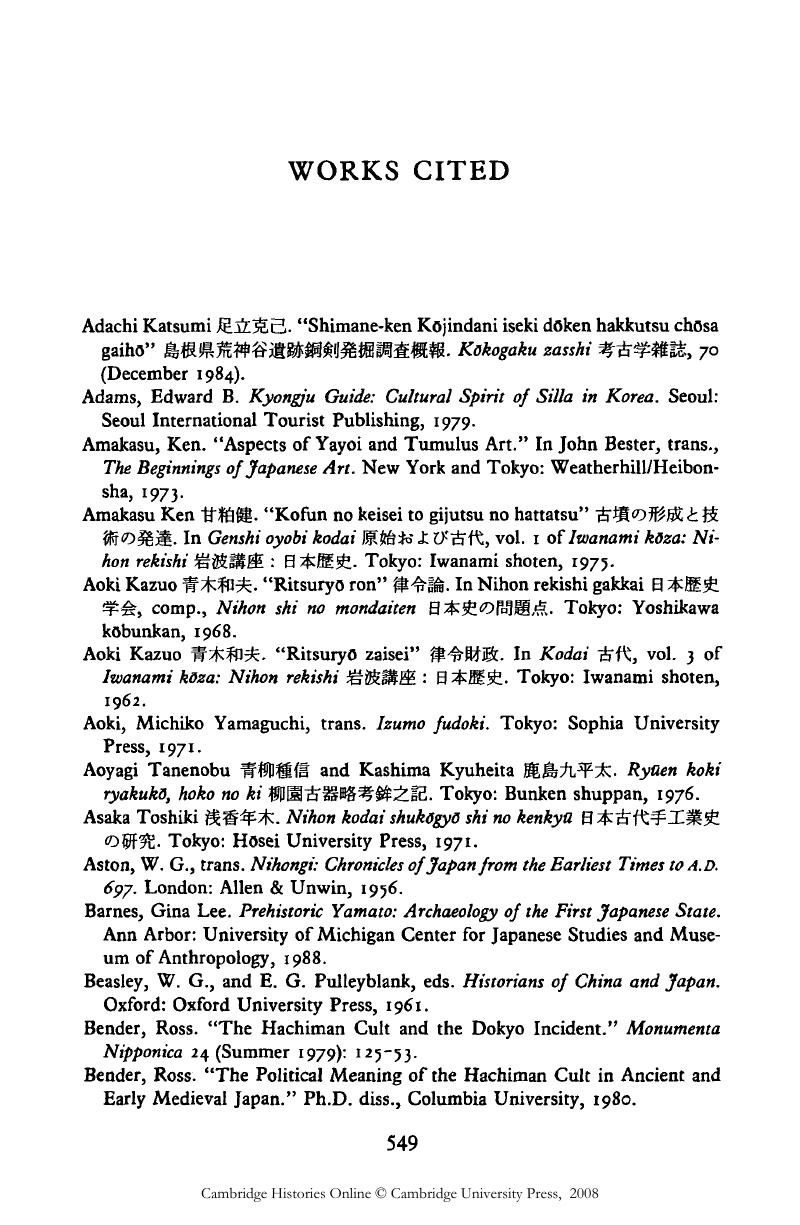Book contents
- Frontmatter
- Introduction
- 1 The earliest societies in Japan
- 2 The Yamato kingdom
- 3 The century of reform
- 4 The Nara state
- 5 Japan and the continent
- 6 Early kami worship
- 7 Early Buddha worship
- 8 Nara economic and social institutions
- 9 Asuka and Nara Culture: literacy, literature, and music
- 10 The early evolution of historical consciousness
- Works Cited
- Index
- References
Works Cited
Published online by Cambridge University Press: 28 March 2008
- Frontmatter
- Introduction
- 1 The earliest societies in Japan
- 2 The Yamato kingdom
- 3 The century of reform
- 4 The Nara state
- 5 Japan and the continent
- 6 Early kami worship
- 7 Early Buddha worship
- 8 Nara economic and social institutions
- 9 Asuka and Nara Culture: literacy, literature, and music
- 10 The early evolution of historical consciousness
- Works Cited
- Index
- References
Summary

- Type
- Chapter
- Information
- The Cambridge History of Japan , pp. 549 - 578Publisher: Cambridge University PressPrint publication year: 1993

